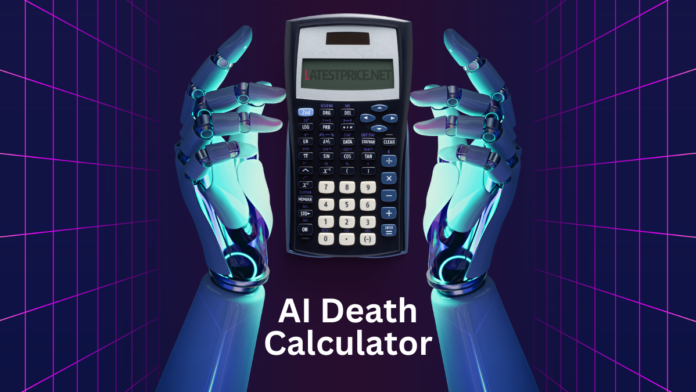Artificial Intelligence (AI) continues to transform industries and lives by providing automation, analysis, and prediction tools. One of the more controversial topics gaining attention is the concept of the “AI Death Calculator”—an AI tool purportedly capable of predicting an individual’s life expectancy. But is this concept genuine, or is it merely a sensationalized myth?
Table of Contents
Let’s explore the AI death calculator, how it works, its potential legitimacy, and whether it’s an actual application or an overhyped idea.
What is an AI Death Calculator?
An AI death calculator is a tool or algorithm designed to predict an individual’s life expectancy based on various data inputs. These inputs may include demographic details, lifestyle habits, medical history, genetic predispositions, environmental factors, etc. The idea is to use predictive modelling to estimate when a person might pass away.
While such a tool sounds fascinating, it’s also shrouded in scepticism and ethical concerns, leading many to question whether it’s scientifically viable or just another gimmick.
How Do AI Death Calculators Claim to Work?
Proponents of the AI death calculator often point to the following mechanisms:
- Data Collection: These tools require extensive data on the individual, including age, gender, medical conditions, lifestyle habits (e.g., smoking or exercise), and sometimes genetic information.
- Machine Learning Algorithms: AI models analyze the collected data to identify patterns and correlations linked to life expectancy. These algorithms are often trained on significant health outcomes and mortality rates datasets.
- Predictive Modeling: Using the patterns identified, the AI predicts life expectancy, often expressed as a range of years or probabilities for different age brackets.
- Risk Analysis: Some tools also highlight factors contributing to a shortened lifespan, such as high cholesterol, obesity, or unsafe living environments, to provide actionable insights.
Real-World Applications and Limitations
While AI tools have been developed to predict health risks and support medical diagnoses, the leap to accurately predicting an individual’s death is far more complex. Here are some applications and limitations:
Applications:
- Healthcare Planning: Predictive tools can help individuals and healthcare professionals identify risk factors and prioritize preventive measures.
- Life Insurance and Actuarial Science: Some insurers use AI-driven models to assess life expectancy for underwriting purposes.
- Public Health: Governments and organizations can use mortality data to plan resources and interventions for high-risk populations.
Limitations:
- Data Accuracy: Predictions are only as reliable as the data they’re based on. Incomplete or biased data can result in inaccurate outcomes.
- Complex Variables: Life expectancy is influenced by countless variables, many of which are unpredictable, such as accidents, sudden illnesses, or environmental disasters.
- Ethical Concerns: Predicting death raises moral questions about privacy, consent, and the psychological impact of knowing one’s estimated lifespan.
- Overgeneralization: While population-level predictions may be reliable, applying these models to individuals can result in significant errors.
Is the AI Death Calculator Real or Fake?
The answer depends on how we define “real.” AI death calculators exist in various forms, often as experimental or theoretical tools rather than widely accepted applications. However, their scientific validity and reliability remain questionable for several reasons:
- Predictive Models Are Not Absolute: While AI can analyze trends and probabilities, predicting an exact lifespan is beyond its current capabilities.
- Ethical and Legal Barriers: Developing and deploying such a tool at scale would face significant ethical scrutiny and regulatory hurdles.
- Sensationalism vs. Reality: Some AI death calculators are little more than marketing gimmicks designed to attract attention rather than deliver accurate predictions.
The Role of AI in Mortality Predictions
Although the concept of an AI death calculator may be exaggerated, AI’s role in mortality predictions is not entirely fictional. AI-driven models are widely used in healthcare to:
- Predict disease progression.
- Assess patient survival rates in critical care.
- Identify high-risk patients requiring early intervention.
These applications demonstrate that while predicting exact life expectancy may not be feasible, AI can contribute valuable insights to improve health outcomes and quality of life.
Verdict
As a precise and reliable tool for predicting an individual’s death, the AI death calculator is more fiction than fact. While AI has incredible potential for analyzing health data and identifying risks, the complexity of human life and the unpredictability of external factors make exact predictions unattainable.
For now, AI’s role is better suited to supporting healthcare decisions and improving longevity rather than making definitive predictions about mortality. As with any emerging technology, it’s essential to approach the concept of AI death calculators with curiosity and scepticism, recognizing their limitations while appreciating the advancements they bring to the health and data science field.


